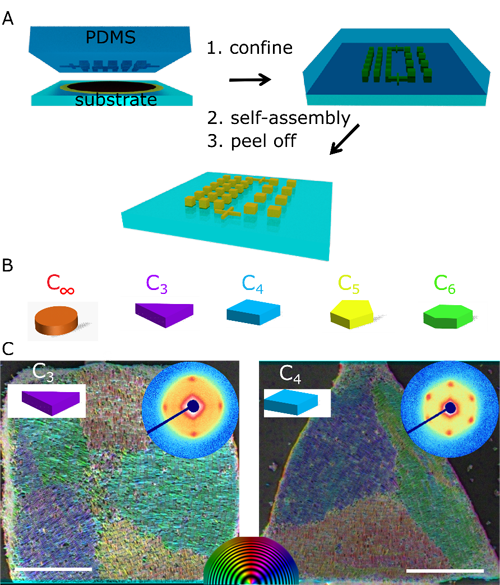Institut Charles Sadron News

Publié le 09/04/2024 par Constantin Doru
Researchers from the Laboratoire de physique des solides (CNRS/Université de Paris-Saclay), the Charles Sadron Institute (CNRS/Université de Strasbourg) and the SWING beamline of the SOLEIL synchrotron achieved the evaporation-induced self-assembly of gold nanoparticles within small cavities with different shapes. They demonstrated the influence of this geometry on the growth of crystal domains and on the formation of grain boundaries (crystal defects) using conventional small-angle X-ray scattering (SAXS), an X-ray microbeam (µSAXS), and scanning electron microscopy (SEM).
These results, published in the journal ACS Nano, show that one can control the orientation of the nanoparticles and the creation of defects during self-assembly. These results could have applications to plasmonics, where the interaction between light and matter must be perfectly controlled.

A) Diagram of the evaporation-induced self-assembly process. B) Shapes of the micro-cavities used. C) SEM images of the self-assembled structures. © Cyrille Hamon
Reference:
Wajdi Chaâbani et al., Prismatic Confinement Induces Tunable Orientation in Plasmonic Supercrystals, ACS Nano 18, 9566–9575 (2024).